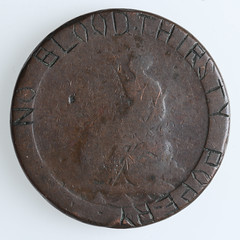
PREV ARTICLE
NEXT ARTICLE
FULL ISSUE
PREV FULL ISSUE
POLITICAL COUNTERMARKS IN NORTHERN IRELANDThe September 2019 Money & Medals newsletter "The Newsletter for Numismatics in Britain" included a nice article by Richard Kelleher of the Fitzwilliam Museum describing a new acquisition of a collection of over 500 countermarked and defaced coins. With permission we're republishing it here. Thank you! -Editor POLITICAL DEFACEMENTS IN NORTHERN IRELAND
The Fitzwilliam Museum was recently able to acquire a large collection of over 500 countermarked and defaced coins formed over several decades by Gavin Scott. This acquisition was made possible thanks to the generous support of an Art Fund New Collecting Award grant for my project ‘Currencies of Conflict and Dissent'. The breadth of the collection itself is a testament to the remarkable dedication of an individual collector. The bulk of the collection comprises British, Irish and French coins from the late 18th century to the present day, but also includes examples from Europe, South Africa, and South America. The Irish material in the collection is of particular significance. The coins display a range of sentiments, both republican and nationalist, personal and paramilitary from the period often referred to as the ‘Troubles' in Northern Ireland. This group is the only significant collection in the British Isles outside of Belfast's Linen Hall Library and Ulster Museum.
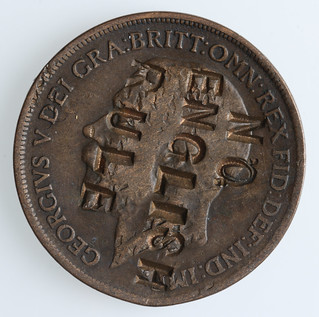 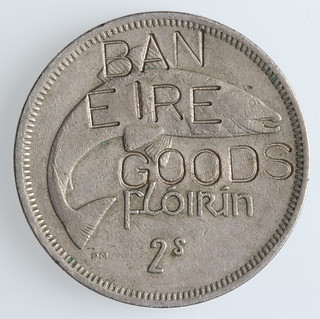
Figures 2 and 3 Figure 5 combines the UVF with the Ulster Freedom Fighters (UFF). In most cases, the nationalist or republican countermarks appear on United Kingdom coins, while the unionist or loyalist messages are stamped onto coins of the Republic of Ireland. Thus the attacks are directed towards the coinage and national symbols of the ‘other' side, the bust of Queen Elizabeth II in the case of the republican countermarks, and the symbols of the Irish Republic in the nationalist countermarks, usually the salmon on the two shillings and ten pence pieces. 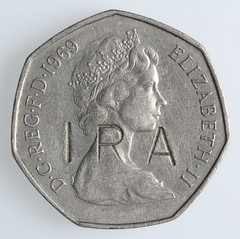 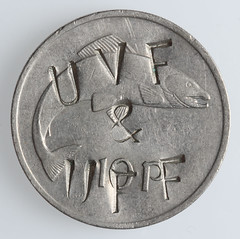
Figures 4 and 5 Other examples reference more specific themes. The one illustrated in Figure 6 is a 1971 UK two-pence which has been stamped with ‘SMASH H BLOCK 8' on the obverse bust. The H-blocks at the Maze/Long Kesh prison housed prisoners convicted of scheduled offences after 1 March 1976, with H-block 8 reserved for IRA prisoners. The hunger strikes of 1981 came in protest at the removal of Special Category Status from prisoners and led to the deaths of ten IRA hunger strikers. The strikes were a Pyrrhic victory for Margaret Thatcher and her government's hard-line approach to this miserable episode as it led to an increase in IRA recruitment and an upsurge in violence. The final coin illustrated as Figure 7 is an Irish 50 pence with the words ‘ULSTER IS BRITISH' stamped on the upper part of the reverse above the woodcock. This claim was a favourite trope of Ian Paisley during his fiery public addresses. 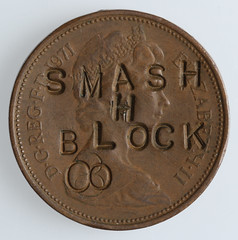 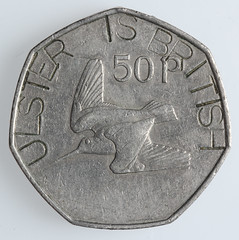
Figures 6 and 7 Material such as this is a poignant rejoinder to the claim that numismatics comprises generic and non-local material. The objects discussed above reveal how mundane, everyday objects were reworked into political touch-pieces. Rather than being generic and non-local these coins are a material reminder of a violent and contested past specific to Northern Ireland. If readers have seen any recent examples of defaced coins of this sort I'd be keen to hear about them at rmk34@cam.ac.uk  Wayne Homren, Editor The Numismatic Bibliomania Society is a non-profit organization promoting numismatic literature. See our web site at coinbooks.org. To submit items for publication in The E-Sylum, write to the Editor at this address: whomren@gmail.com To subscribe go to: https://my.binhost.com/lists/listinfo/esylum All Rights Reserved. NBS Home Page Contact the NBS webmaster 
|
